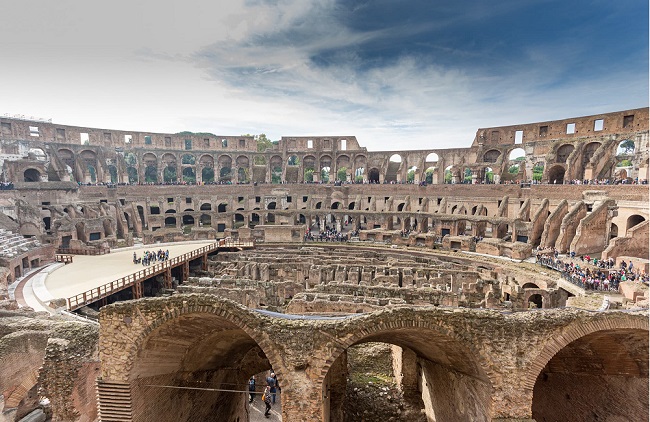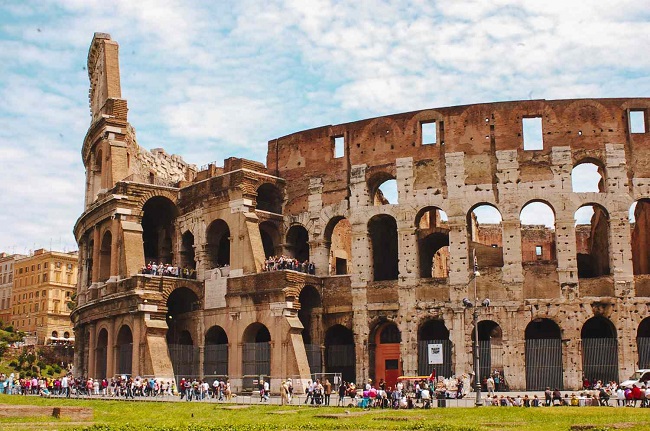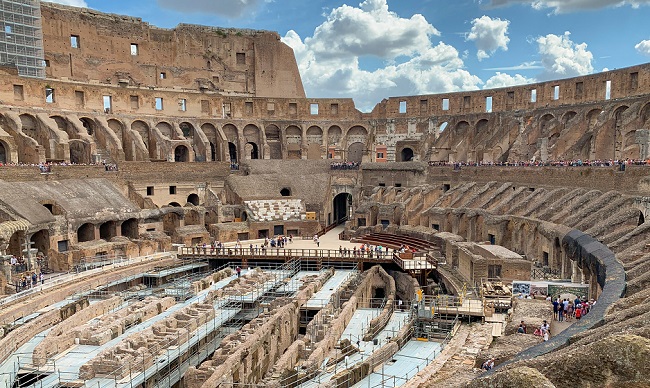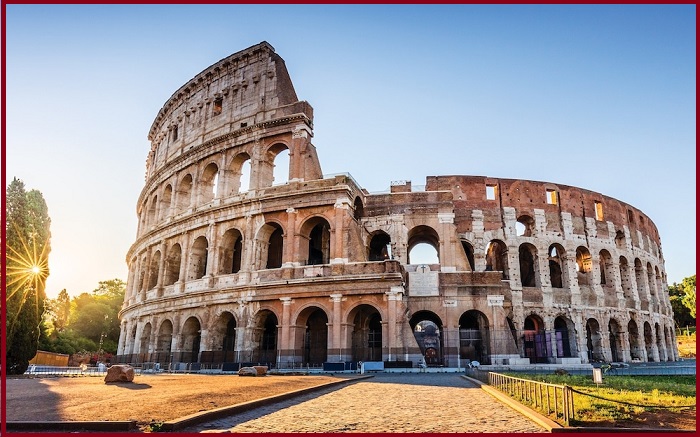A Symbol of the Brutality and Power of the Roman Empire-Colosseum Rome
Colosseum Rome
The Colosseum also named the Flavian Amphitheater is a historical structure and the most iconic symbol of the ancient world in Rome. It was built during the reign of the Flavian emperors as a gift to the Roman people. 0Construction of the Colosseum began sometime between C.E. 70 and 72 under the emperor Vespasian. It opened nearly 10 years later and was modified several times in the following years. The massive structure measured approximately 189 by 156 meters, towered four stories high, and included 80 entrances to the amphitheatre-76 for the patrons, two for participants of events, and two exclusively for the emperor to use. The Colosseum could hold more than 50,000 spectators at its maximum capacity.

The Colosseum was used for the celebrated gladiatorial games. Emperors traditionally attended the games. Aside from the games, the Colosseum also hosted dramas, reenactments, and even public executions. Colosseum was originally known by its official name, the Flavian Amphitheater. It is believed the name Colosseum derives from the amphitheatre’s nearby statue Colossus of Nero, a huge bronze statue that once stood nearby.
Colosseum History
The Colosseum is the main symbol of Rome. It is an imposing construction that will bring you back in time to discover the way of life in the Roman Empire. The Colosseum is an oval-shaped amphitheatre in the centre of the city of Rome, Italy. It is the largest ancient amphitheatre ever built and is still the largest standing amphitheatre in the world. Construction began under the emperor Vespasian in 72 and was completed in 80 AD under his successor and heir, Titus. Further modifications were made during the reign of Domitian (r. 81–96). The three emperors that were patrons of the work are known as the Flavian dynasty, and the amphitheatre was named the Flavian Amphitheatre.

After completion, the Colosseum became the greatest Roman amphitheatre. The Roman Colosseum allowed more than 50,000 people to enjoy its finest spectacles. The exhibitions include exotic animals, executions of prisoners, recreations of battles and gladiator fights that kept the Roman people entertained for years. The Colosseum remained active for over 500 years. The last recorded games in history were celebrated in the 6th century.
Also, read- The Grudge or Al Ba’sa-The skinniest building in the world
A series of earthquakes during the 5th century C.E. damaged the structure, and also suffered from neglect. The Colosseum suffered lootings, earthquakes and even bombings during World War 2. By the 20th century, nearly two-thirds of the original building had been destroyed. Today it is one of modern-day Rome’s most popular tourist attractions, attracting millions of visitors a year. On 7 July 2007, the Colosseum became one of the Seven Wonders of the Modern World.

How Colosseum Built
The Colosseum is built of travertine limestone, tuff (A volcanic rock), and brick-faced concrete. The site chosen for construction was a flat area on the floor of a low valley between the Caelian, Esquiline and Palatine Hills. By the 2nd century BC, the area was densely inhabited. It was devastated by the Great Fire of Rome in 64 AD, following which Nero seized much of the area and built the grandiose Domus Aurea on the site, in front of which he created an artificial lake surrounded by pavilions, gardens and porticoes.



